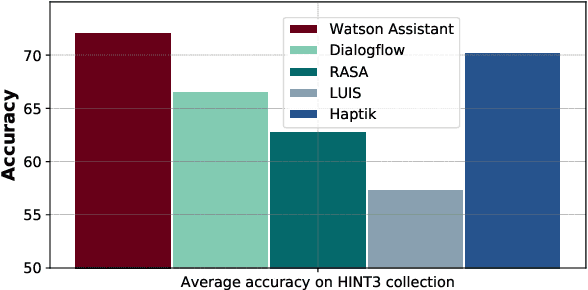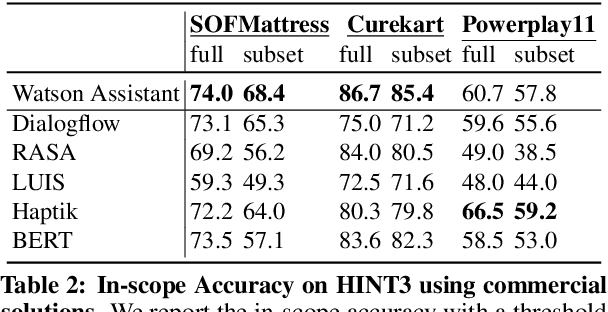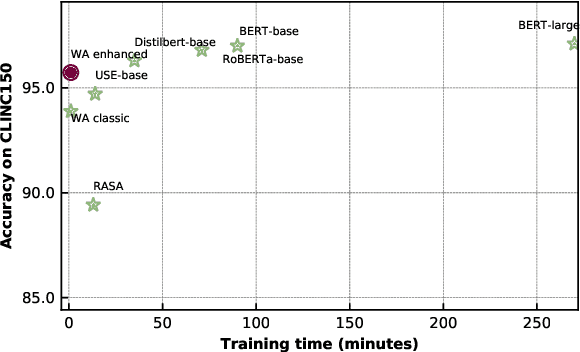Ladislav Kunc
Distinguish Sense from Nonsense: Out-of-Scope Detection for Virtual Assistants
Jan 16, 2023Abstract:Out of Scope (OOS) detection in Conversational AI solutions enables a chatbot to handle a conversation gracefully when it is unable to make sense of the end-user query. Accurately tagging a query as out-of-domain is particularly hard in scenarios when the chatbot is not equipped to handle a topic which has semantic overlap with an existing topic it is trained on. We propose a simple yet effective OOS detection method that outperforms standard OOS detection methods in a real-world deployment of virtual assistants. We discuss the various design and deployment considerations for a cloud platform solution to train virtual assistants and deploy them at scale. Additionally, we propose a collection of datasets that replicates real-world scenarios and show comprehensive results in various settings using both offline and online evaluation metrics.
Benchmarking Intent Detection for Task-Oriented Dialog Systems
Dec 07, 2020



Abstract:Intent detection is a key component of modern goal-oriented dialog systems that accomplish a user task by predicting the intent of users' text input. There are three primary challenges in designing robust and accurate intent detection models. First, typical intent detection models require a large amount of labeled data to achieve high accuracy. Unfortunately, in practical scenarios it is more common to find small, unbalanced, and noisy datasets. Secondly, even with large training data, the intent detection models can see a different distribution of test data when being deployed in the real world, leading to poor accuracy. Finally, a practical intent detection model must be computationally efficient in both training and single query inference so that it can be used continuously and re-trained frequently. We benchmark intent detection methods on a variety of datasets. Our results show that Watson Assistant's intent detection model outperforms other commercial solutions and is comparable to large pretrained language models while requiring only a fraction of computational resources and training data. Watson Assistant demonstrates a higher degree of robustness when the training and test distributions differ.
 Add to Chrome
Add to Chrome Add to Firefox
Add to Firefox Add to Edge
Add to Edge